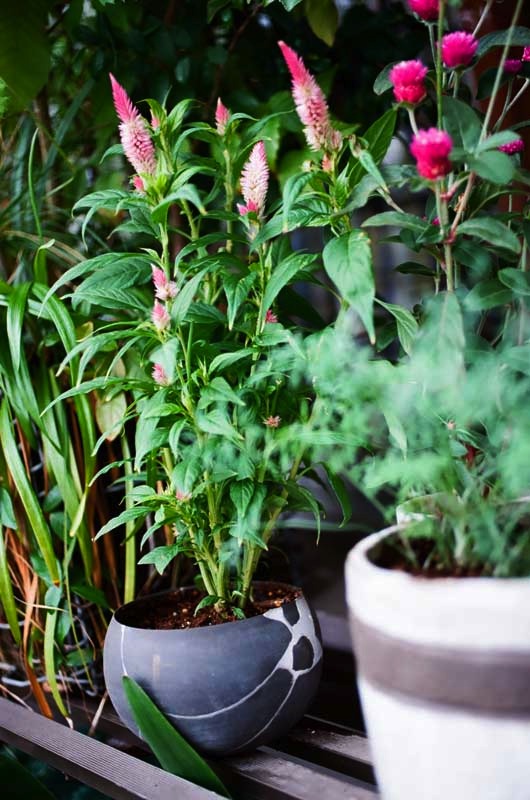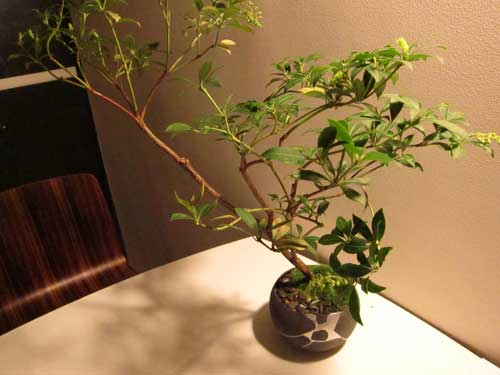 旦那の両親が教室を再開しました。手仕事屋久家で、絵画や楽焼や金継ぎを教えます。企画支援もあります。様々な年齢や国籍の人が集まります。私は教室で、最近エアプラントの植木鉢を作りました。杉並区の新高円寺の近くです。お気軽に見学にいらしてください! My in-laws have relaunched their art studio as Kuge Crafts, or Teshigotoya Kuge. They are still teaching pottery and also now kintsugi (a form of decorative repair for ceramics), drawing, and jewelry making. The studio is near Shin Koenji, in Suginami ward. The teachers welcome students from all countries and of all ages. One thing the website doesn’t mention is that delicious cake and coffee are also served at every class! If you’re interested, please call or drop by! Thanks to graphic designer and former student Jessica Mantell and front-end developer Kai Bansner, we made a new website for the studio that is formatted for smart phones, PCs, and tablets.
旦那の両親が教室を再開しました。手仕事屋久家で、絵画や楽焼や金継ぎを教えます。企画支援もあります。様々な年齢や国籍の人が集まります。私は教室で、最近エアプラントの植木鉢を作りました。杉並区の新高円寺の近くです。お気軽に見学にいらしてください! My in-laws have relaunched their art studio as Kuge Crafts, or Teshigotoya Kuge. They are still teaching pottery and also now kintsugi (a form of decorative repair for ceramics), drawing, and jewelry making. The studio is near Shin Koenji, in Suginami ward. The teachers welcome students from all countries and of all ages. One thing the website doesn’t mention is that delicious cake and coffee are also served at every class! If you’re interested, please call or drop by! Thanks to graphic designer and former student Jessica Mantell and front-end developer Kai Bansner, we made a new website for the studio that is formatted for smart phones, PCs, and tablets.
金継ぎ
Kintsugi pot adds metallic charm to balcony garden

This kintsugi pot adds a bright metallic shine to the balcony garden. Here I’ve planted this long-blooming flower. I like the pink-red flowers, which have bloomed for months. Kintsugi, which is the decorative repair of usually old pottery, is a specialty of my teacher at Shiho ceramic studio.
I don’t know the name of this plant, and frankly bought it as “filler.” The husband thinks that “filler” is a harsh name, but don’t most gardens also rely on having a few plants purchased for their immediate appeal with minimal money and thought? Since it’s thrived so long, I should probably learn its name.
Update: The Japanese name is Seroshia (セロシア), and it’s called Celosia argentea, plumed cockscomb, and Prince of Wales Feathers and Flamingo Feathers.
White pansies have bloomed all winter in kintsugi ceramic

史火で友人のマシューが作った金継ぎの植木鉢の中でこの白色のパンジーは冬からずっと咲いています。金継ぎという芸術は壊れた陶器を直すことです。
I love this white pansy and the beautiful kintsugi pot that my friend Matthew made at Shiho ceramic studio. Kintsugi is a technique for repairing broken pottery, and involves painting the cracked lines in gold or silver. They’re have been many continuous flowers for months, even though I never added soil or any nutrients to the store-bought filler plant. Very satisfying and cheerful.
Gorgeous winter bonsai gift in kintsugi bowl

友達が新年のきれいな盆栽を作ってくれました。金継ぎをした植木鉢に常緑樹のアセビが植えてあります。
This beautiful, new year bonsai made by a friend matches an evergreen tree with a pot re-made from shards.
I received this gorgeous new year bonsai gift from Matthew Puntigam, a friend and research fellow colleague at the Tokyo University of Agriculture’s Landscape Architecture Science department (農大). It’s a perfect new year gift: the woody bark tree retains its leaves in winter, the beautiful bowl re-created to show its cracks, lush moss and stones from a recent trip to Mie.
The tree is called アセビ (Asebi in Japanese, and Pieris japonica in Latin). My childhood home in the mid-Atlantic United States had a pair of these flowering broad-leaf evergreens by the front door. This specimen is simultaneously showing new growth and flower buds.
The method of putting broken ceramics back together is called 金継ぎ (kintsugi). This pot is one of Matt’s first, which he learned at the Suginami ceramic studio Shiho (史火) where I also make flowerpots and vases. Often gold is used, but I think silver goes very well with the black ceramic and winter bonsai.